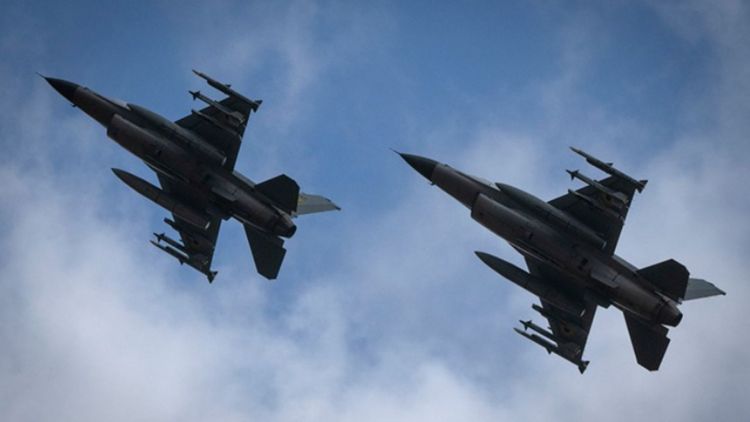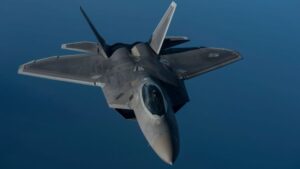When we think about military aid, it’s easy to focus on the big-ticket items—the flashy fighter jets, tanks, and missiles that dominate the headlines.
But there’s an often-overlooked aspect of warfare that’s just as important: keeping those systems running.
Ukraine’s recent acquisition of F-16s is a game-changer, but what really matters now is whether they can keep these birds in the air over the long haul.
That’s where the Netherlands’ latest contribution comes into play, and it’s more than just missiles and jets—it’s about sustainability.
Let’s take a closer look at the critical support behind keeping these aircraft operational for the long haul.
Beyond Just Aircraft Deliveries
The Netherlands has committed €80 million ($89 million) to Ukraine, not just for air-to-air missiles but also for spare parts, maintenance materials, and the tools needed to keep the F-16 fleet flying.
“Besides large quantities of spare parts, these include generators, small vehicles, essential maintenance materials, specialised tools, and stairs,” Dutch Minister of Defence Ruben Brekelmans stated.
For safety reasons, the minister didn’t share any details about the quantities or types of equipment. He also didn’t mention exactly when the delivery will happen, but the goal is to get everything to Ukraine as quickly as possible.
When we think about military aid, it’s easy to focus on the big-ticket items—the flashy fighter jets, tanks, and missiles that dominate the headlines.
But there’s an often-overlooked aspect of warfare that’s just as important: keeping those systems running.
Ukraine’s recent acquisition of F-16s is a game-changer, but what really matters now is whether they can keep these birds in the air over the long haul.
That’s where the Netherlands’ latest contribution comes into play, and it’s more than just missiles and jets—it’s about sustainability.
Let’s take a closer look at the critical support behind keeping these aircraft operational for the long haul.
Beyond Just Aircraft Deliveries
The Netherlands has committed €80 million ($89 million) to Ukraine, not just for air-to-air missiles but also for spare parts, maintenance materials, and the tools needed to keep the F-16 fleet flying.
“Besides large quantities of spare parts, these include generators, small vehicles, essential maintenance materials, specialised tools, and stairs,” Dutch Minister of Defence Ruben Brekelmans stated.
For safety reasons, the minister didn’t share any details about the quantities or types of equipment. He also didn’t mention exactly when the delivery will happen, but the goal is to get everything to Ukraine as quickly as possible.
This might not sound as exciting as a fresh batch of shiny new jets, but it’s arguably even more critical. After all, what good is a fleet of F-16s if you can’t keep them mission-ready?
This support goes deeper than just delivering the aircraft. It’s about ensuring that the Ukrainian Air Force can maintain and sustain these complex machines through the grueling conditions of war.
Think of it like owning a high-performance sports car—sure, it’s fast, but without regular maintenance, spare parts, and the right tools, it’s going to spend more time in the shop than on the road.
Dutch F-16A block 15. (Baldur Sveinsson)
The Backbone of Military Operations: Maintenance and Supply Chains
In modern warfare, maintaining a functional and effective air fleet is just as important as having one.
And as we all know, F-16s—all fighter jets in general—are not simple machines; they require constant upkeep, fine-tuning, and the right parts to stay operational. This is where the Netherlands’ package becomes essential.
The spare parts, generators, small vehicles, and specialized tools they’re providing will keep the F-16s running, ensuring that Ukraine can use them to full effect.
This is particularly crucial in a prolonged conflict like the one Ukraine is fighting. You can’t just deliver jets and expect them to function perfectly forever.
Fighter jets are complicated, and they break down, especially in tough environments like a warzone.
The real game is in making sure those jets stay in the air, mission after mission. And that’s where maintenance and supply chains come in—they’re the unsung heroes of military effectiveness.
Keeping Ukraine’s F-16s Operational: A Strategic Imperative
Ukraine’s air force is now in the spotlight, and keeping those F-16s operational is a top priority.
Air-to-air missiles are great for taking out enemy aircraft, and they’re going to be a crucial tool for Ukraine’s defense.
But none of that matters if the planes can’t get off the ground because of a missing part or a maintenance delay.
The Netherlands’ package includes everything from spare parts to essential maintenance materials, which will help ensure these F-16s stay in the fight.
By focusing on sustainability, Ukraine can keep using these jets for months and years to come, rather than relying solely on fresh deliveries of new aircraft.
This logistical support allows Ukraine to extend the life and effectiveness of its fleet, giving it a significant edge against Russia’s aerial capabilities.
(Dutch Minister of Defence)
Long-Term Focus of Ukraine’s International Allies
This move by the Netherlands shows that Ukraine’s international allies are playing the long game. It’s not just about immediate aid—it’s about ensuring Ukraine has the tools and support it needs to sustain its military strength over time.
Countries like the Netherlands and Denmark (which also pledged F-16s) are providing more than just jets; they’re helping build a foundation for long-term operational success.
This shift from quick fixes to sustainable solutions reflects a deeper understanding of modern warfare.
It’s not just about what happens today or tomorrow; it’s about making sure Ukraine is still able to fight a year from now, two years from now, or as long as it takes.
By focusing on spare parts, maintenance, and behind-the-scenes logistics, allies are helping Ukraine create an air force that’s built to last.
Challenges and Timeline Uncertainties
Of course, there are still some uncertainties.
The exact timeline for when these supplies will arrive remains unclear, and in war, timing can be everything. Ukraine needs these materials as soon as possible, especially given the pressure they’re under.
There’s also the challenge of integrating these supplies into Ukraine’s existing infrastructure.
It’s one thing to receive spare parts; it’s another to make sure they’re put to use efficiently.
Still, the Netherlands’ contribution is a strong step in the right direction. It shows that Ukraine’s allies are thinking about sustainability and long-term support, rather than just quick solutions.
That’s a promising sign for Ukraine’s future military effectiveness.
Final Thoughts: Airpower Is About More Than Just Jets
At the end of the day, sustaining airpower is about much more than just delivering fighter jets.
It’s about the supply chains, spare parts, and maintenance operations that keep those jets flying.
The Netherlands’ €80 million package may not make the same headlines as the delivery of F-16s, but it’s just as crucial for Ukraine’s success. By ensuring these jets can stay operational over the long term, Ukraine’s allies are helping to build a sustainable air force capable of withstanding the pressures of modern warfare.
In a conflict that’s showing no signs of slowing down, that kind of support will be essential. As much as new jets and missiles are important, keeping those assets in the air and battle-ready is what will make the real difference in the months and years to come.
—
Disclaimer: SOFREP utilizes AI for image generation and article research. Occasionally, it’s like handing a chimpanzee the keys to your liquor cabinet. It’s not always perfect and if a mistake is made, we own up to it full stop. In a world where information comes at us in tidal waves, it is an important tool that helps us sift through the brass for live rounds.



